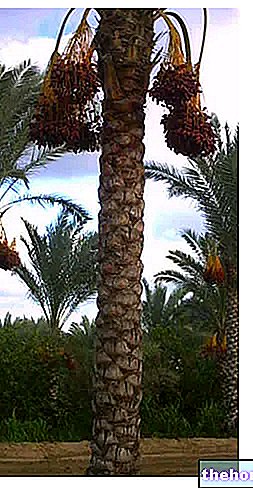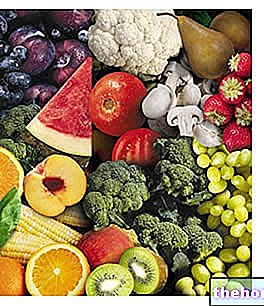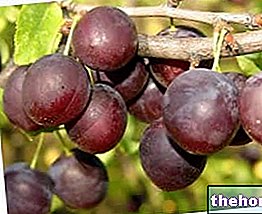
Natural sources of vitamin C (ascorbic acid), lychee fruits belong to the VII fundamental group of foods. They are also rich in water, have a considerable energy intake from simple sugars (fructose) and have a modest concentration of fiber and potassium.
Lychee is a tropical tree native to the Guangdong and Fujian provinces of China, where its cultivation has been documented since 1059 AD. China is the leading producer of lychees, followed by India, other countries in Southeast Asia, the Indian subcontinent and South Africa.
The lychee plant is very tall, evergreen. It produces small fleshy fruits, externally covered by a fibrous, rigid, reddish-pink capsule. The pulp, white, translucent, sweet but acidulous, contains a single elongated, smooth, brown seed.
Lychees are used in many sweet recipes. Since the flavor and aroma of these fruits is largely lost in the canning process, the fruit is preferably eaten fresh.
Lychee fruits contain many phytochemicals, beneficial and poisonous. Among the beneficial ones we mention polyphenolic antioxidants. Among the poisonous ones, however, especially in the seeds, methylencyclopropylglycine abounds, an active ingredient with a hypoglycemic capacity, presumably responsible for serious side effects such as non-inflammatory encephalopathy found in Indian and Vietnamese children.
which, in the context of sweet fruits, can be considered of medium-high entity. Energy is mainly supplied by carbohydrates, followed by irrelevant percentages of proteins and lipids. The carbohydrates are, as we have said, of the soluble type and more precisely constituted by fructose. The few peptides have low biological value and the composition of fatty acids is in favor of the unsaturated ones.
Lychees are free of cholesterol, gluten, lactose and histamine. Instead, they have a good content of water, fiber and antioxidants. The purine content should be very low.
A French study (Daily Polyphenol Intake in France from Fruit and Vegetables) showed that lychees contain more polyphenols than many other fruits such as apples and grapes. These are made up of 87% of flavan-3-ols monomers and dimers (which reduce with storage), while cyanidin-3-glucoside accounts for 92% of total anthocyanins. Lychees also contain oligonol, a polyphenol a short chain studied for some hypothetical biological properties.
As far as minerals are concerned, lychees do not seem to have noteworthy concentrations; the only exception, albeit not astonishing, is constituted by potassium.
Instead, they contain significant quantities of water-soluble vitamins, particularly vitamin C. The fresh pulp contains 72 mg of ascorbic acid per 100 grams of edible portion, an amount that represents 86% of the daily requirement. On average, the consumption of nine lychees can meet an adult's daily vitamin C requirement.

Litchi, Raw
Nutritional values per 100 g
Total carbohydrates
16.53 g
Starch
14.0µg
0.0µg
-µg
0.07 mg
0.4µg
Magnesium
They have no contraindications in the treatment of arterial hypertension, hypercholesterolemia and hyperuricemia. The same applies to food intolerance to lactose, gluten and histamine.
The abundance of water and the potassium content make lychees useful food in the athlete's diet. The fiber content, although not amazing, contributes to the achievement of the amount necessary to maintain intestinal health.
The richness in vitamin C and polyphenols can be very useful to support the defensive action against free radicals. Furthermore, ascorbic acid is a necessary factor for the synthesis of collagen, a very widespread protein in the human body, and helps to support the immune system.
by Ac Mong - from the Vietnamese word "nightmare"). A 2013 "Indian survey conducted by the Centers for Disease Control and Prevention" (CDC) showed that these cases, characterized by symptoms almost identical to Jamaican vomiting sickness, were linked to the consumption of lychees. L "Ac Mong encephalitis, more common in malnourished children who ate lychees on an empty stomach, fatal in 44% of cases, was therefore triggered by" hypoglycemia (glycaemia below 70 mg / dl) caused by "hypoglycine A (abundant in unripe fruit ). Other evaluations have found that lychees contain "unusual amino acids" that can affect gluconeogenesis and β-oxidation of fatty acids, contributing to the onset of acute disease.Part of fruit taken for analysis
MCPG content
Lychee seeds
1.80 g / g dry weight
Immature lychee pulp
0.57 g / g fresh weight
Ripe lychee pulp
0.18 g / g fresh weight
The CDC report recommends parents make sure children limit total lychee consumption and only take them after meals to raise blood glucose levels.
Previous studies had erroneously concluded that handling lychees contaminated with saliva, urine or bat guano, or other vectors (such as insects), could increase the infection by Chandipura virus (CHPV - a member of the Rhabdoviridae family, associated with the outbreak of an encephalitic disease in man).
A 2017 study found that pesticides used on plantations could be responsible for the deaths of children in Bangladesh.
of lychee ".




























